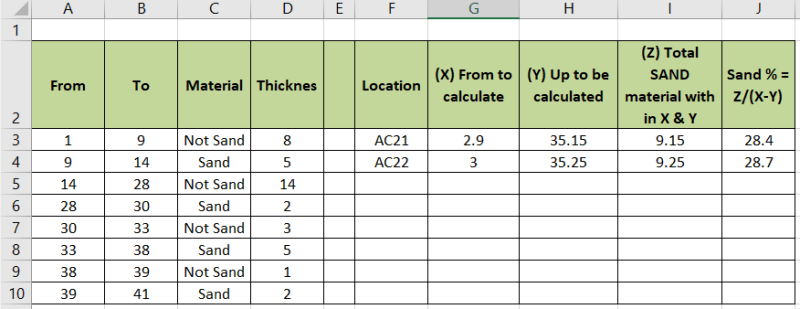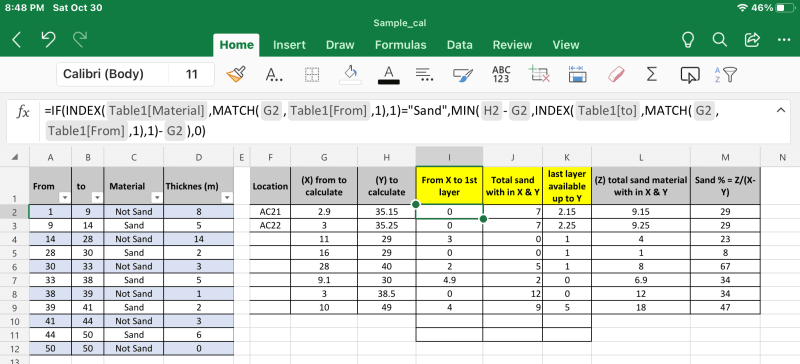Geosubhtech
Geotechnical
- Jan 2, 2018
- 57
Greetings of the day....
I am trying to make one dynamic SUM in excel.
i want to input the different depths in G & H column. The layers with SAND thickness should be returned in I column. the extra difference also should be included with in.

The sample file i have attached. I tried some approach but it;s very complex and need continuous check.
Can anyone help me with this?
Link
I am trying to make one dynamic SUM in excel.
i want to input the different depths in G & H column. The layers with SAND thickness should be returned in I column. the extra difference also should be included with in.

The sample file i have attached. I tried some approach but it;s very complex and need continuous check.
Can anyone help me with this?
Link

![[glasses] [glasses] [glasses]](/data/assets/smilies/glasses.gif) Just traded in my OLD subtlety...
Just traded in my OLD subtlety...![[tongue] [tongue] [tongue]](/data/assets/smilies/tongue.gif)
